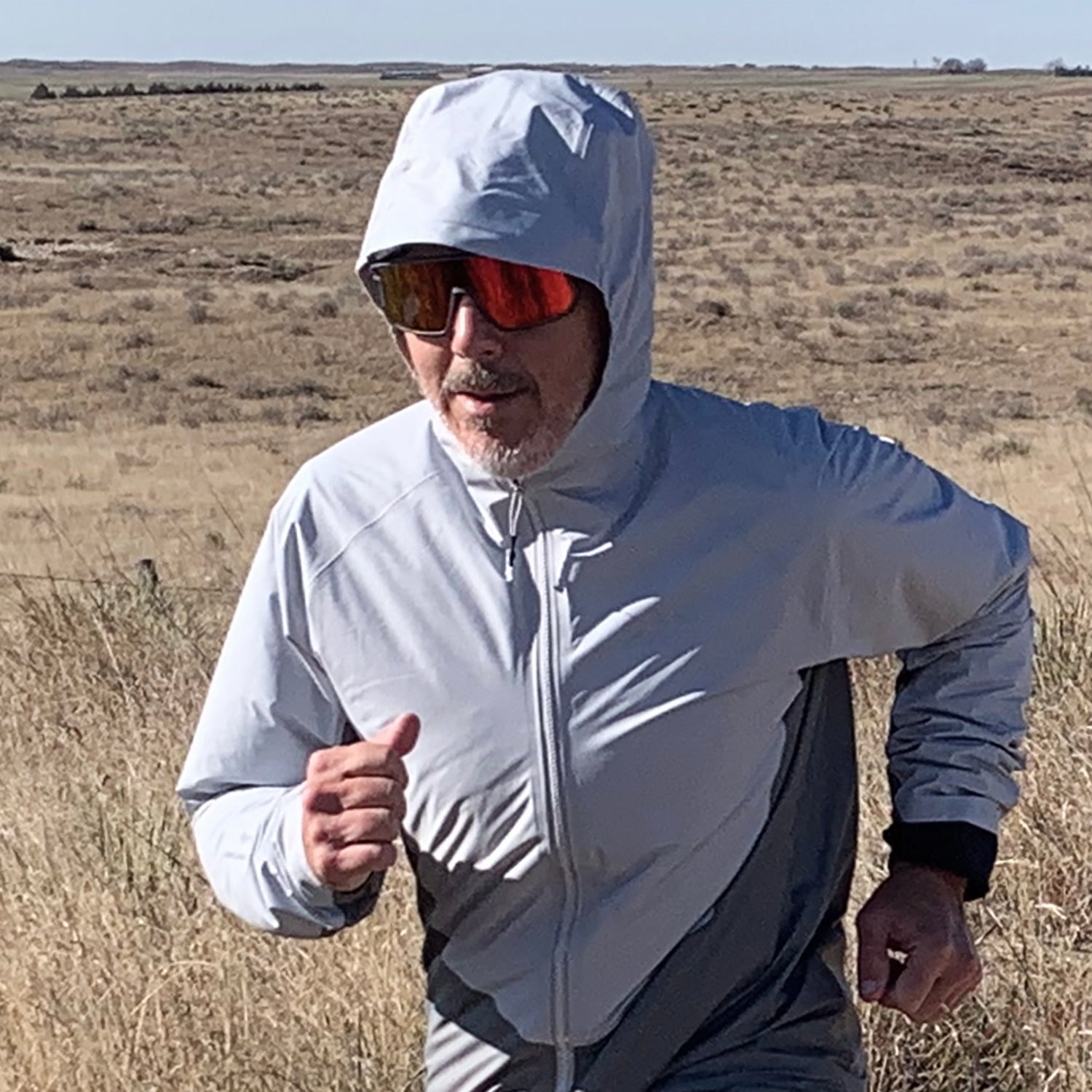In Buddhism, suffering is known as dukkha and is considered a fundamental characteristic of existence. It’s caused by ignorance but can be overcome. In that sense, the jackets in this collection offer a pathway to enlightenment: They relieve suffering by providing reliable warmth in conditions ranging from merely chilly to threateningly cold. Do not be afraid to experience winter, grasshoppers—no dukkha required.
At a Glance
- Best All-Around:
- Most Versatile:
- Best for Mild Temperatures:
- Best for Cold Temperatures:
- Best for Frigid Temperatures:
- Best for Wet Conditions:
- How to Choose a Winter Running Jacket
- How We Test
- Meet Our Testers
If you buy through our links, we may earn an affiliate commission. This supports our mission to get more people active and outside. Learn more.
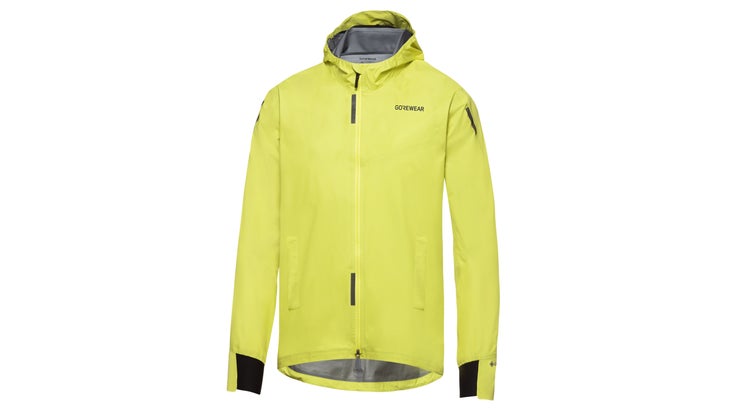
Best All-Around
Gorewear Concurve Gore-Tex Jacket
Weatherproofing: Gore-Tex fabric, leak-proof taped seams
Sizing: XS-XXL
Pros and Cons
⊕ Reliable warmth in wet and windy conditions
⊕ Full-length zipper allows for quick heat dumping
⊗ Tight fit in the arms is not suitable for everyone
This lightweight jacket kept us dry and comfortable, no matter what turns the conditions took. At the outset of a windy mountain run, the streamlined hood added welcome protection, and the nylon liner was warm and didn’t stick to our skin even when paired with only a synthetic T-shirt. Deeper into our workouts, opening the full-length zipper allowed us to dump excess heat quickly, and the breathable fabric performed flawlessly. Taped seams and a reliable Gore-Tex membrane prevented any hint of water penetration, even in a heavy spring Colorado snowstorm. The fabric moved moisture so well one tester reported his base layer shirt wasn’t soaked after a run during an early winter storm that changed from 30-something degrees with snow to high-40s and rain over the course of 4 miles. Our only quibbles were that the forearms were a tad restrictive for some testers, the fabric sounded a bit crinkly, and the lining behind the zipper sometimes caused jams.
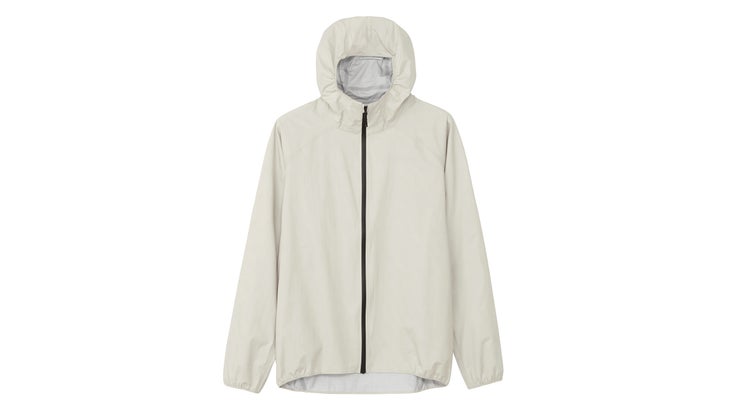
Most Versatile
Goldwin Pertex Shieldair A/L Jacket
Weatherproofing: Pertex waterproof fabric, some taped seams (not shoulders)
Sizing: 2–5 proprietary sizes
Pros and Cons
⊕ Breathable, lightweight construction
⊕ Roomy cut allows layers underneath
⊗ Shoulder seams are not sealed
Whisper-light and eminently race-ready, this versatile shell shielded us from wind, rain, and cold without a hint of clamminess, even when running flat-out and uphill. The waterproof Pertex fabric is surprisingly soft and offers a welcome amount of stretch. Decidedly no-frills, the Shieldair lacks pockets, wrist closures, or anything that could add a hint of extra weight. Forgoing these features leaves a stripped-down but fully functional jacket that kept us warm and dry in all but the harshest conditions, especially when paired with a suitable mid-layer. While the shoulder seams are not fully sealed, we never noticed any leaking. It packs down to the size of a pop can and easily fits into waist-mounted packs, offering substantial, at-the-ready protection at a minimal weight cost.
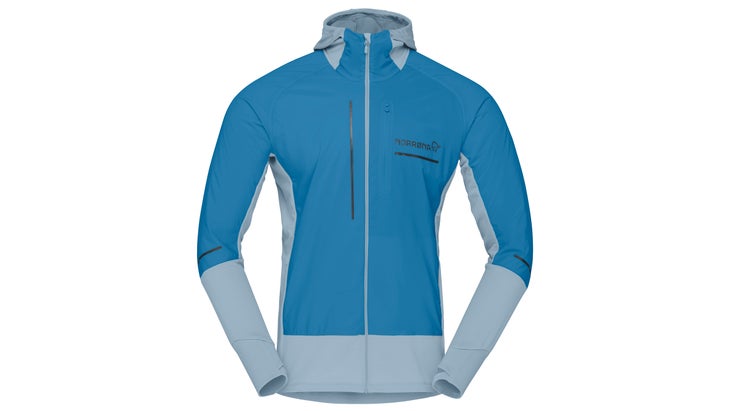
Best for Mild Temperatures
Norrøna Senja Alpha90 Hooded Fleece
Weatherproofing: Recycled nylon face fabric provides partial wind protection
Sizing: S-XL
Pros and Cons
⊕ Loads of features combined in a lightweight package
⊕ Breathable fabric wicks away moisture
⊗ Minimal insulation for use as a mid-layer on frigid days
We wore this comfortable, lightly insulated top well into the fall and spring shoulder seasons—it proved just right, worn by itself or with a light baselayer, for days that started near the freezing mark and warmed into the 40s or low 50s. The stretchy, breathable Polartec grid fabric effectively carried sweat away, and when the temperature climbed, the deep, full-length zipper allowed for quick regulation. There’s no lack of features, including thumb loops, a roomy chest pocket, and a nicely tailored stretch hood. Some testers thought the Senja was a tad over-engineered for a lightweight piece and some deemed its temperature sweet spot too narrow, reducing its versatility.
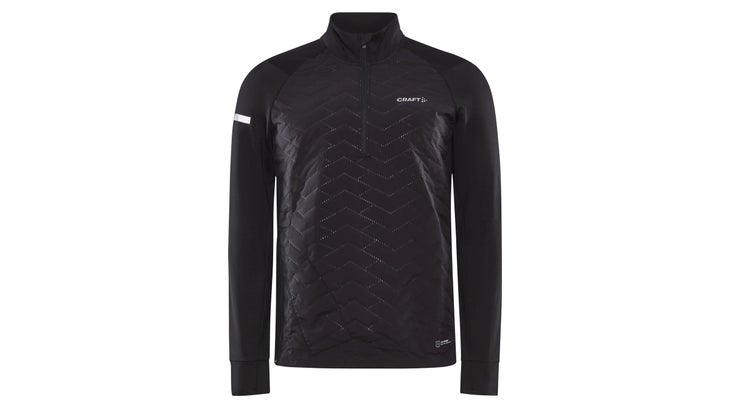
Best for Cold Temperatures
Craft Adv SubZ Running Sweater 3
Weatherproofing: Wind-resistant front panel
Sizing: S-XXL
Pros and Cons
⊕ Insulated front panel adds warmth and blocks wind
⊕ Zipper at the waist allows quick venting without a flopping collar
⊗ Slim cut limits layering options
The thick and cozy brushed recycled polyester and elastane fleece fabric on the sleeves and back made this jacket plenty warm for running in sub-freezing conditions, even during hour-long winter outings on damp New England trails. When the wind picked up, the three-layer, lightly insulated, wind-resistant chest panel offered solid protection without overheating—and if we needed to ventilate, a zipper that rises from the side of the waist meant that the collar didn’t bounce around annoyingly. This piece functions like a sweater/jacket hybrid—we often wore it paired with a wool T-shirt or long sleeve baselayer, a combination that worked well down to single digits or a few notches below zero degrees Fahrenheit. In extreme cold, you might need to add an outer shell, especially given the thinner, more breathable fabric on the sleeves and back.
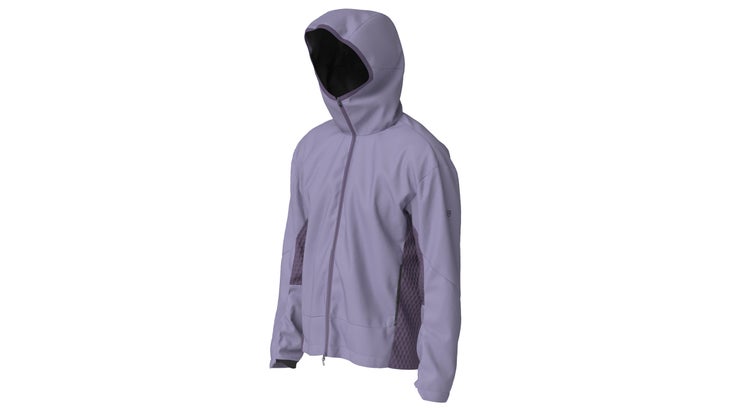
Best for Frigid Temperatures
Ciele Athletics VLVInsulator
Weatherproofing: Water-repellant shell, wool/silk insulation, fleece lining
Sizing: XS-XL
Pros and Cons
⊕ Warm liner combined with effective silk/wool insulation
⊕ Drawcord hem and hood closures seal out cold
⊗ High-crop waist leaves the midriff vulnerable
This jacket’s stand-out features—a hearty hood, wool/silk insulation, and fleece lining—are reminiscent of a winter parka, making it warm enough for runs down deep in the negative temps. But it’s also light and breathable enough for running in temperatures from the low-20s Fahrenheit. The two-way zipper is key for handling variable conditions; it allows cooling air in when needed, then easily seals shut again. We found the thick hood too warm for anything but genuinely frigid conditions, and the high crop at the waist sometimes let in drafts. If an exclusively black and gray running wardrobe is getting you down, check out the cheerful “Nelson” lavender color option.
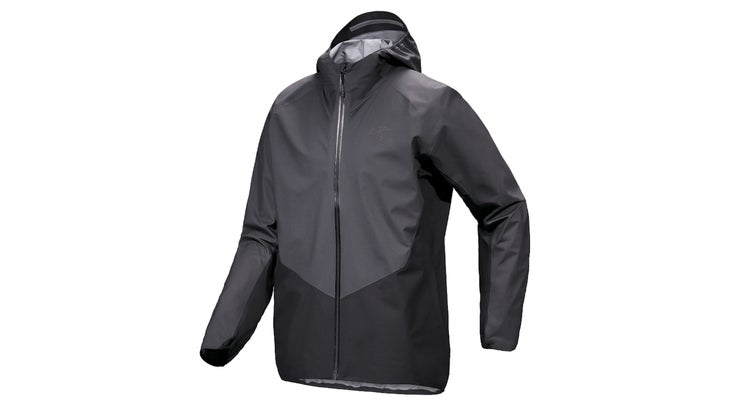
Best for Wet Conditions
Arc’teryx Norvan Shell Jacket
Weatherproofing: Gore-Tex shell
Sizing: XS-XXL
Pros and Cons
⊕ Reliable protection in the heaviest storm conditions
⊕ Outstanding breathability
⊗ No tighteners for arm cuffs
This immaculately constructed jacket inspired our confidence in wet, stormy conditions. The highly breathable Norvan never wetted out, even during hard efforts in cold, snow, and rain. Lacking pit zips, pockets, or insulation, this shell is lightweight, packable, and highly mobile—a minimalist’s dream. Given that approach, it’s unsurprising that the wrist cuff closures are limited to a pinch of elastic, which sometimes allowed drips into the sleeves while we were fiddling with the hood adjuster tab. But these knocks didn’t diminish the jacket’s appeal as an almost magical, unnoticeable shield against nasty weather.
How to Choose a Winter Running Jacket
Choosing a winter running jacket is primarily about the kinds of winter conditions you face where you live, travel, and run. Consider if you need a waterproof layer, or can get by with water resistance—waterproof jackets are more costly, don’t breathe quite as well, and tend to be somewhat stiffer and noisier, but are worth it when you’re out in a downpour or blizzard.
Then think about if you want your running jacket to be insulated and provide warmth on its own, or work as a thin, exterior shell. Insulated jackets can make heading out in frigid temps less daunting, especially if you tend to run cold, but can get hot during high-intensity exercise or if the temps rise. Shell jackets allow you to layer underneath to adjust for a range of conditions. Also consider if you want a fitted jacket that stays close to the body for streamlined mobility, or a looser fit that affords flexibility with layering underneath.
How We Test
Mark Eller led the test crew for this review. Based in Boulder, Colorado, he pursues running, cross-country skiing, snowshoeing, and other outdoor activities that keep him away from treadmills when the snow flies. He coordinated getting dozens of winter running items to additional testers in New England, the high plains, and the Rocky Mountains who wore the gear in this review in a variety of cold conditions for many months before making their picks and writing their comments.
Meet Our Testers
Lead reviewer Mark Eller trains through the winter on the roads and trails near his hometown of Boulder, Colorado. He’s a three-time Boston Marathon veteran, a hack Nordic skier, and a competitive racer in on-water racer rowing events.
Based in Cambridge, Massachusetts, Michael Rorick has run and raced in New England since his middle school track team days in Connecticut. He’s completed many editions of Boston, New York, and other major marathons.
Brian Metzler is the Editor in Chief of RUN and the founding editor of Trail Runner. A former walk-on Division I track athlete, he mostly runs on mountainous trails nowadays in Boulder and Leadville, Colorado.
Scott Douglas has run more than 130,000 miles since starting as a teen. He has held senior editorial positions at running publications and is the author or co-author of several well-known running books, including Advanced Marathoning, Meb for Mortals, and Running is My Therapy. Scott runs every day unless injured, and always runs outside, either despite of or because of living in North Yarmouth, Maine.
Jonathan Beverly is no stranger to winter weather. He began running in high school on the Maine coast, trained for marathons for years in New York, and now can be found chasing windmills in the western Nebraska Sandhills, accompanied by his two dogs. He is the senior running gear editor for ���ϳԹ���.


